With its deeply golden crust and irresistible crunch of toasted sesame seeds, simit is the Turkish bagel that’s taken over breakfast tables and tea carts around the world. Let me guide you through my tried and tested, easy simit recipe that’s flavorful, vegan, and doesn’t even require grape molasses if you don’t have it.
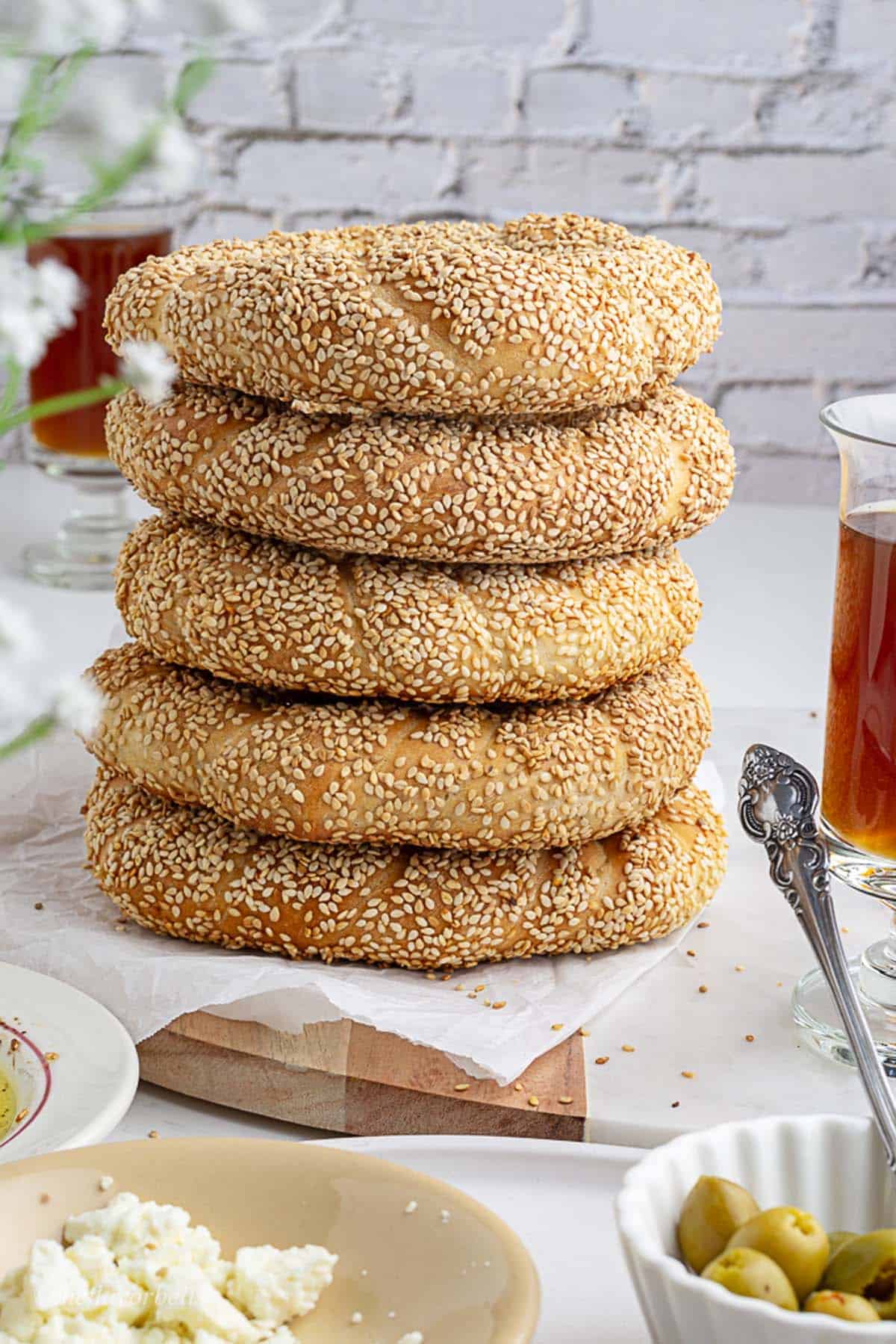
👩🏽🍳 Why You Should Make This Simit Recipe
- No special ingredients required: This simit recipe uses pantry staples and offers substitutes for items like grape molasses, making it an easy simit recipe to try at home.
- Authentic taste: The crusty, sesame-laden exterior and soft interior replicate the flavor and texture of Turkish street food simit.
- Versatile serving options: Great on its own, with cheese and olives, or made into a simit sandwich.
- Egg-free and adaptable: This recipe contains no eggs and can easily be adapted into a sourdough simit recipe.
🧂 Simit Ingredient Notes
Let’s explore the heart of this Turkish sesame bread with all the ingredient insights you need:
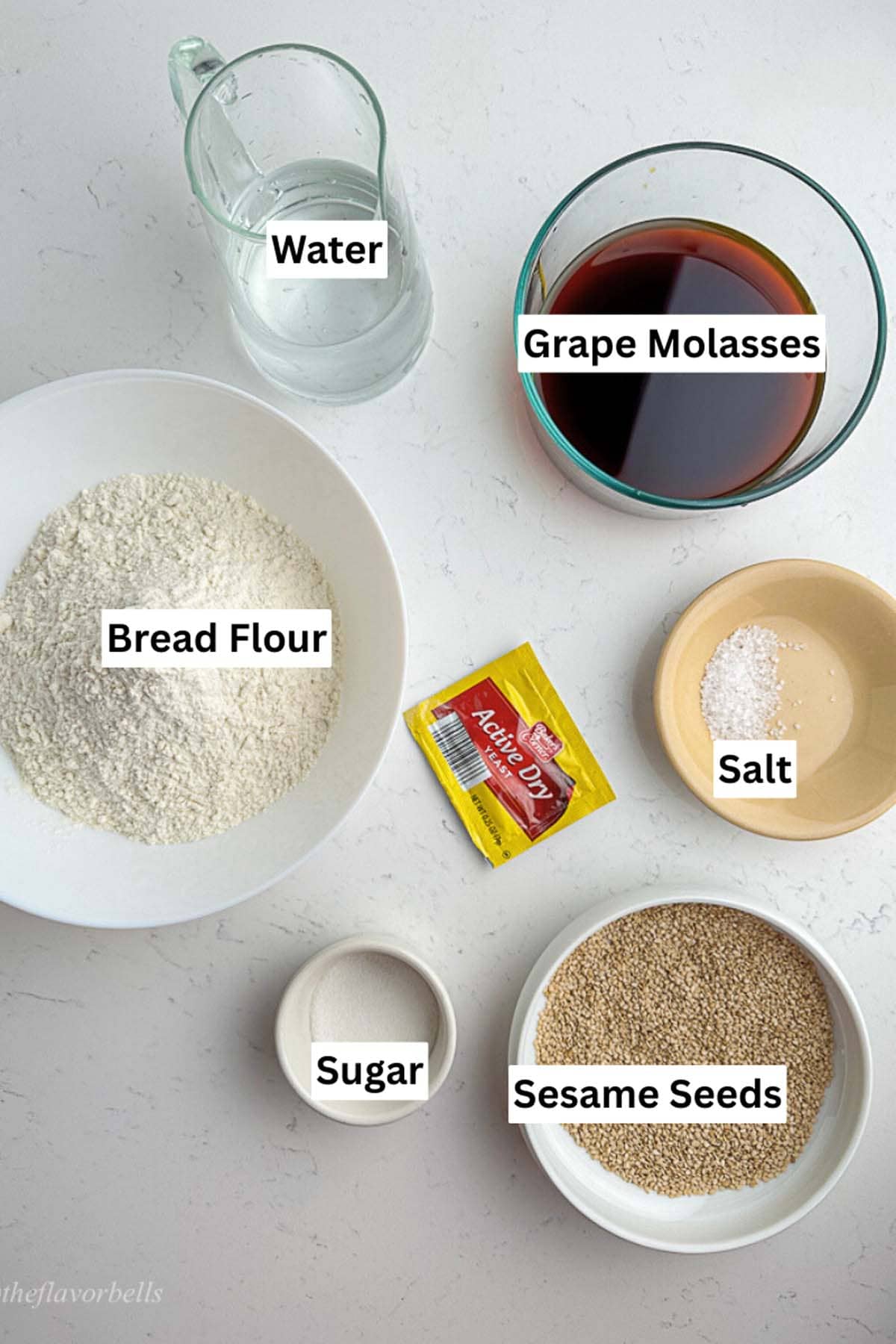
- Bread Flour: Bread flour yields a chewier texture which is characteristic of traditional simit. If unavailable, you may use all-purpose flour but expect slightly less chew.
- Warm Water: Use warm (not hot) water to activate the yeast. Filtered water is best to avoid chlorine interference.
- Sugar: Enhances browning and feeds the yeast. You can use honey or maple syrup as substitutes.
- Salt: Crucial for flavor. Fine sea salt or kosher salt is ideal.
- Active Dry Yeast: If using instant yeast, no need to bloom—just mix with flour. Adjust proofing time slightly.
- Grape Molasses: Traditionally used in Turkish simit recipes, grape molasses (üzüm pekmezi) helps achieve that shiny, golden-brown crust. You can substitute it with pomegranate molasses, date syrup, sugar cane molasses and water mixture or even a honey-water mixture if needed.
- Sesame Seeds: Use toasted sesame seeds for maximum flavor. Toast them yourself in a dry pan until golden and aromatic if buying raw.
🔪 How to Make Turkish Simit – Instructions
Step 1: Blooming Active Dry Yeast
Start by blooming the yeast. In a small bowl, combine warm water and sugar, then sprinkle the active dry yeast over it. Let it sit undisturbed for 10–12 minutes, until foamy.
This step ensures that your yeast is active and will produce a well-risen dough. If the mixture doesn’t foam, the yeast may be expired and should be replaced before proceeding.
Step 2: Kneading the Dough (by Stand Mixer or Hand)
In a large mixing bowl or the bowl of a stand mixer, combine the bloomed yeast mixture, bread flour, and salt. Mix on low speed for about 10-12 minutes until it begins to come together. Increase speed to medium speed and knead for 5-8 minutes more until you have a smooth, elastic dough that pulls away from the sides.
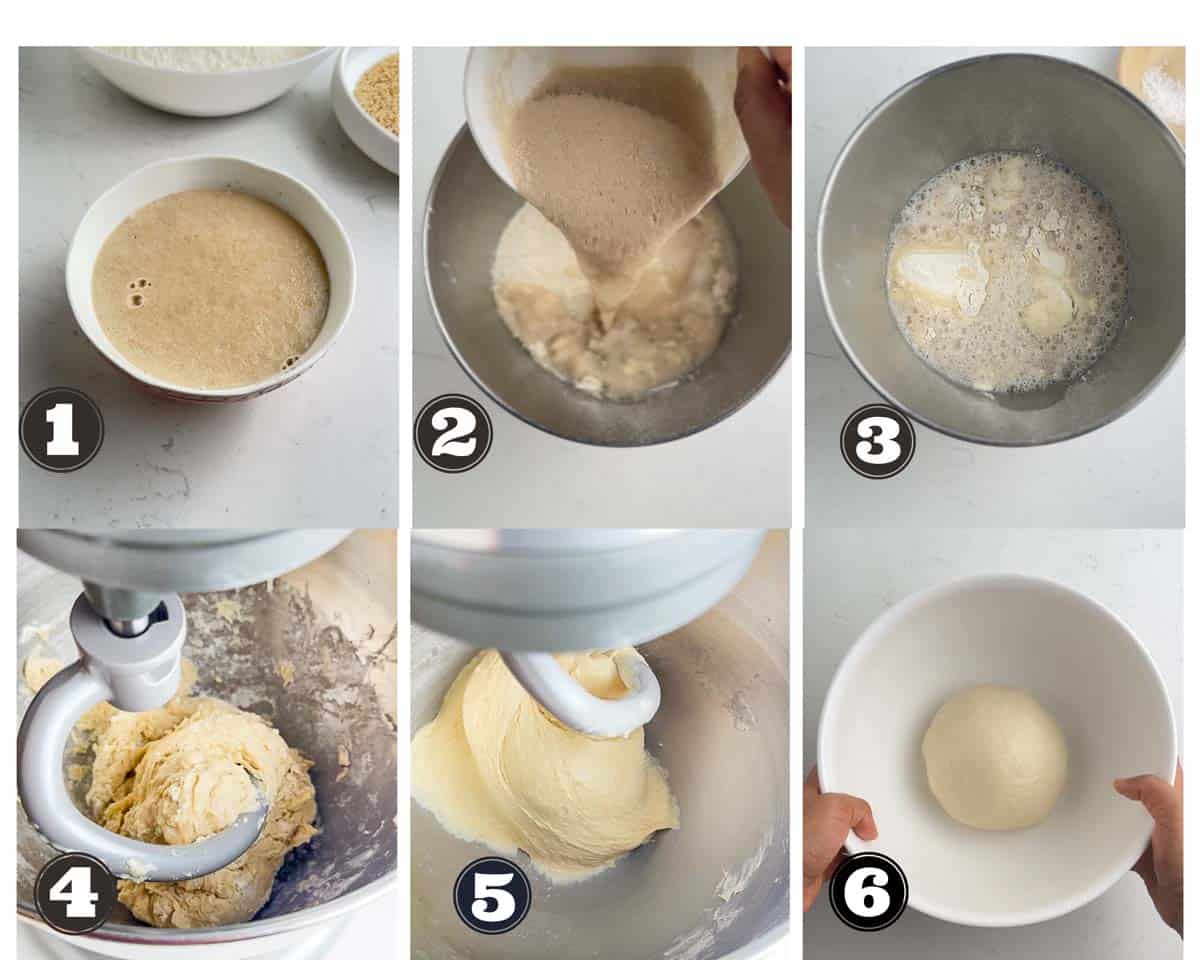
If kneading by hand, turn the dough onto a lightly floured surface. Push, fold, and rotate the dough for about 10–12 minutes until soft and pliable. The dough should not be sticky, but slightly tacky. Add a light sprinkle of flour if needed—but not too much.
Step 3: Bulk Fermentation
Transfer the dough into a lightly oiled bowl, cover it with a clean damp towel or plastic wrap, and place in a warm spot for 60–75 minutes, or until it doubles in size. The dough should spring back slowly when poked.
Step 4: Shaping Simit
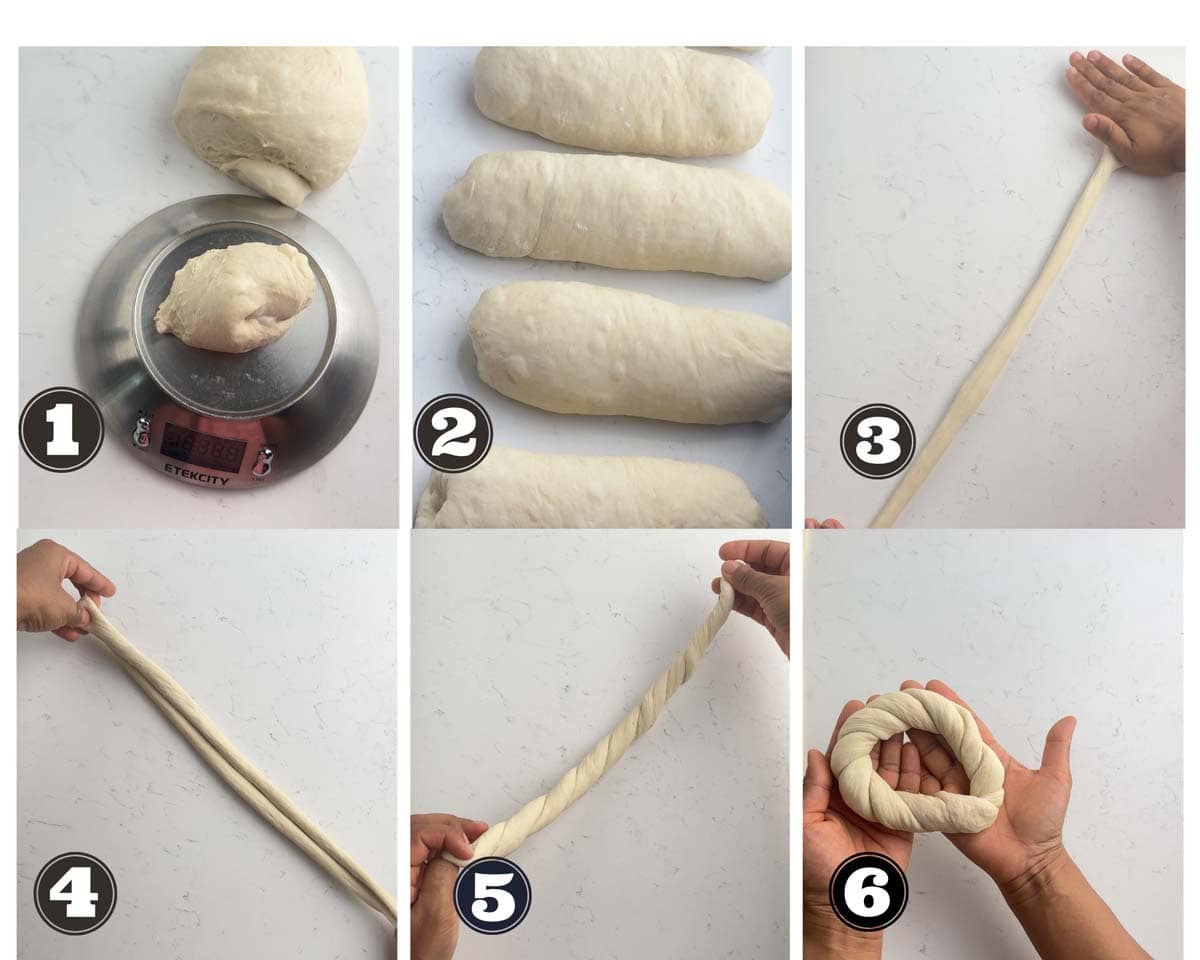
After the bulk rise, gently deflate the dough and divide it into 6 equal pieces of about 101 grams each. Let them rest for 10 minutes under a kitchen towel to relax the gluten.
To shape, take one piece and roll it into a 20-inch rope. Fold it in half, pinch the ends together, and then twist the strands around each other. Finally, bring the ends together and pinch to seal, forming a ring. Repeat with remaining dough.
Alternate method: You can also roll each piece into a single long strand, then shape into a circle and twist the ring on itself like a rope.
Step 5: Molasses Dip & Sesame Coating
In a shallow dish, combine grape molasses with a bit of warm water to thin it out into a molasses mixture. Dip each ring first into the molasses, allowing the excess to drip off, and then dredge in a tray of toasted sesame seeds, coating thoroughly.
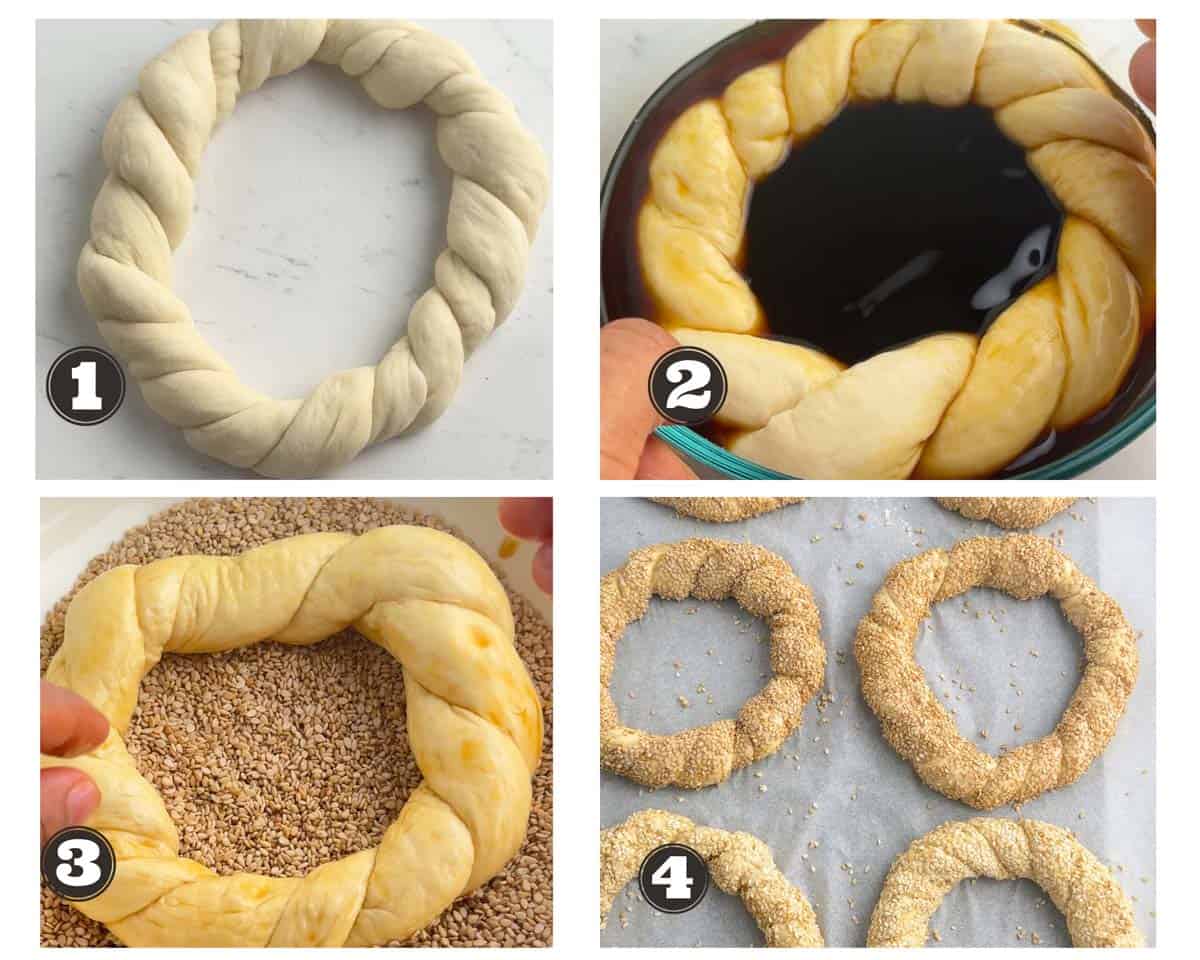
Place the coated rings onto a parchment-lined baking sheet, spacing them apart so they have room to rise.
Step 6: Final Proofing
Cover the rings with a clean towel and let them rest for 20–22 minutes at room temperature. They should become slightly puffy, but not double in size. This step ensures the simit remain soft and not overly airy.
Step 7: Baking
Preheat your oven to 450°F (230°C). Bake the simit for 12 minutes at this temperature to achieve that iconic golden crust. Then reduce the oven temperature to 400°F (200°C) and bake for another 10–12 minutes until they turn deep golden brown.
Avoid overbaking, as this can dry out the crumb.
Step 8: Cooling and Serving
Remove from oven and allow to cool on a wire rack for about 5–10 minutes. Simit are best enjoyed warm. Serve with feta cheese, olives, sliced tomatoes, or use them for a hearty simit sandwich. You can also enjoy them with Turkish tea or Turkish eggs for a complete breakfast experience.
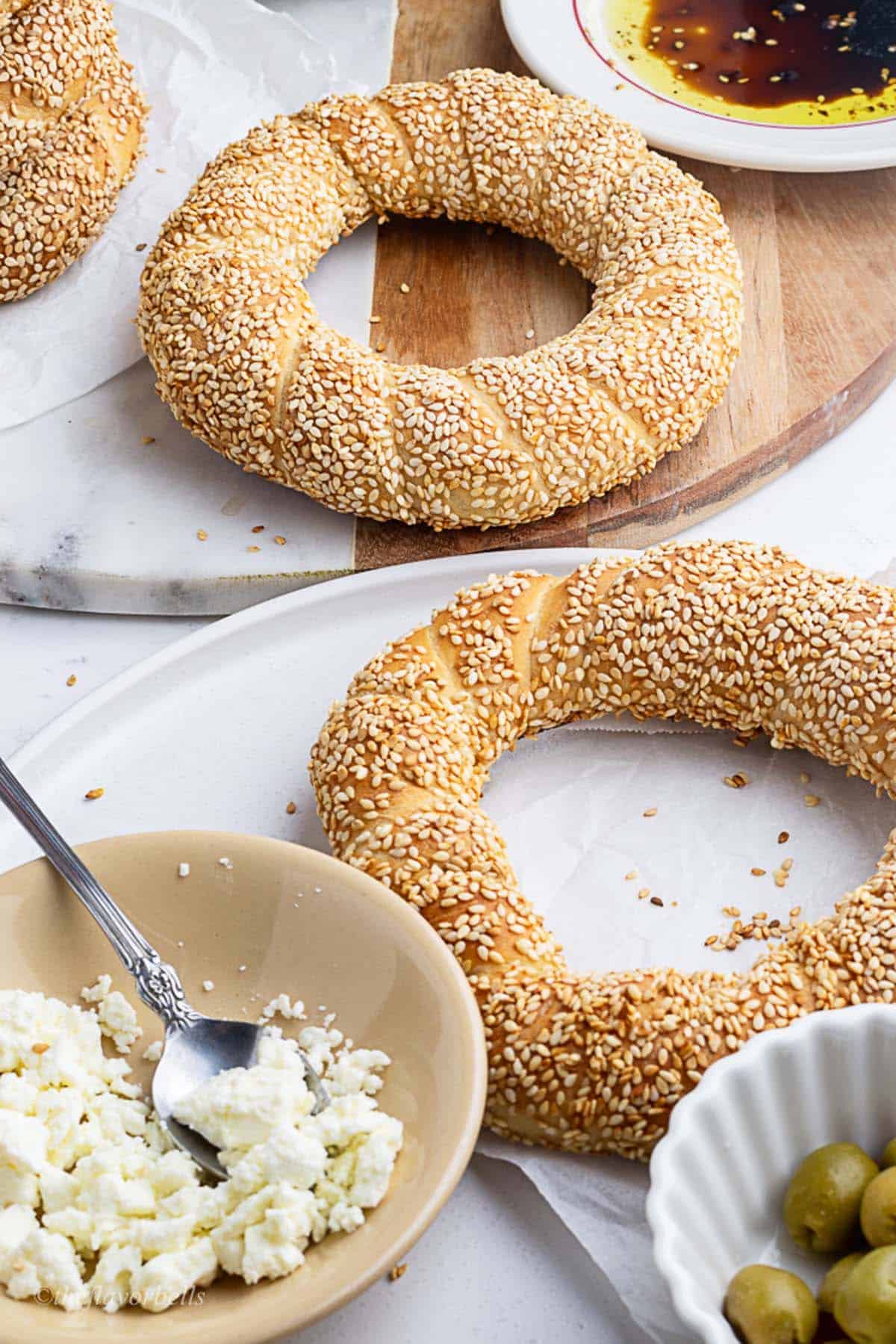
📝Recipe Notes & Tips
- Use room temperature ingredients for the best dough texture.
- Grease the bowl lightly to prevent the dough from sticking during bulk fermentation.
- Don’t overproof the shaped simit; too much time can deflate their rise in the oven.
- Toasted sesame seeds give the best flavor and stick better to the dough.
- Want a richer flavor without grape molasses? Mix pomegranate molasses with a splash of water and maple syrup.
- You can also prepare simit dough in a bread machine, then shape and bake manually.
🔗 Suggested recipe
- Nutella babka
- Scali Bread
- 3-ingredient bagels
- Sourdough Bagels
- Sesame seeds bagels
- Challah Buns
- Turkish Bread
- Pita Bread
Crispy on the outside, soft and chewy inside — these golden sesame-crusted bread rings are a beloved Turkish street snack. This recipe uses simple ingredients and no eggs, making it perfect for a vegan-friendly breakfast or tea-time treat.
Give this easy simit recipe a try and let the warm, golden sesame bread rings transport you straight to the streets of Istanbul! Ready to bake? Leave a comment and share how your Turkish bagels turned out!

Simit Recipe ( Turkish Bagels Recipe)
Ingredients
Ingredients For the Dough:
- 350 g bread flour ≈ 2 ¾ cups
- 245 g lukewarm water ≈ 2 ¾ cups
- 1 teaspoon sugar
- 1 teaspoon salt
- 2 teaspoon active dry yeast
Ingredients For Coating:
- 2 cups grape molasses
- ⅔ cup sesame seeds (untoasted or lightly toasted)
Instructions
- 👩🍳 Instructions
Activate the yeast
- In a mixing bowl, combine lukewarm water, sugar, and active dry yeast. Stir and let sit for 10 minutes until the mixture becomes foamy.
Make the dough
- Add bread flour and salt to the yeast mixture. Mix with a spoon until a shaggy dough forms. Knead by hand or with a stand mixer for 8–10 minutes until smooth and elastic.
First proof
- Cover the bowl with a damp towel or plastic wrap. Let the dough rise in a warm place for 1 to 1.5 hours, or until doubled in size.
Divide and Shape
- Once risen, turn the dough onto a lightly floured surface. Divide into 6 equal pieces of 101g each.
- Roll each piece into a long rope (about 18 inches), fold it in half, twist the two strands together, and shape into a ring.
- Pinch the ends to seal.
Molasses and sesame coating
- Pour the grape molasses into a wide, shallow bowl. (If very thick, dilute slightly with water.)
- Place sesame seeds on a large plate or in a shallow wide bowl.
- Dip each ring into the molasses, while flipping and soaking on both sides.
- Then Drop them in the sesame seeds bowl and coat evenly with sesame seeds.
Second rise
- Place the coated rings on a parchment-lined baking sheet. Cover and let rise again for 15–20 minutes.
Bake
- Preheat your oven to 450°F (230°C) while the simit are still in second rise stage.
- Bake the simit for 12 minutes at this temperature to achieve that iconic golden crust.
- Then reduce the oven temperature to 400°F (200°C) and bake for another 10–12 minutes until they turn deep golden brown.
Cool and enjoy
- Transfer to a wire rack to cool slightly. Serve warm or at room temperature.
Notes
- Molasses: Traditional simit uses grape molasses (pekmez). If it’s too thick, dilute with a tablespoon or two of water to make dipping easier. A traditional ingredient in Turkish simit, grape molasses gives the bread its signature glossy, golden-brown crust. If unavailable, you can use alternatives like pomegranate molasses, date syrup, a mix of sugar cane molasses and water, or even a honey-water blend as a substitute.
- Sesame seeds: Toasting the sesame seeds in a dry pan enhances their nutty flavor, but it’s optional.
- Texture tip: For a crispier crust, bake directly on a preheated baking stone or steel if available.
- Serving: Pair with feta cheese, olives, sliced tomatoes, and Turkish tea for an authentic experience.
- Storage: Store leftovers in an airtight container at room temperature for up to 2 days or freeze for longer shelf life. Reheat in the oven for best texture.
Nutrition
🫙🔥Storage & Reheating Instructions
Simit is best the day it’s made, but it stores well:
- Store cooled simit in a paper bag or bread box for 1-2 days.
- For longer storage, wrap tightly and freeze for up to 2 months.
- Reheat in a preheated oven at 350°F (175°C) for 5-7 minutes or toast in a pan until warm and crispy.
❓Frequently Asked Questions
Absolutely! A sourdough simit recipe is a wonderful way to add more depth of flavor. Replace the active dry yeast with 100g active sourdough starter, reduce the water slightly, and extend the fermentation period.
Bulk ferment the dough until it doubles in size (this may take 4–6 hours depending on your starter’s strength), and do a cold retard overnight if desired. Sourdough simit will have a tangier flavor and a chewier bite, making them even more delicious and digestible.
Simit is one of the most versatile Turkish street food items. The classic way to eat it is with feta cheese, olives, sliced cucumber, and tomatoes. It also pairs beautifully with jams, honey, and soft cheeses.
For a heartier option, you can make a simit sandwich using cream cheese, eggs, or even grilled vegetables.
In Turkey, it’s often enjoyed with a cup of Turkish tea or as a side with Turkish eggs. Because of its neutral flavor, simit can be either savory or sweet, depending on the accompaniments.
This authentic Turkish simit recipe is your gateway to recreating a beloved Turkish street food experience at home. Whether you enjoy it warm from the oven or as part of a breakfast spread, simit is a delightful, sesame-studded treat.


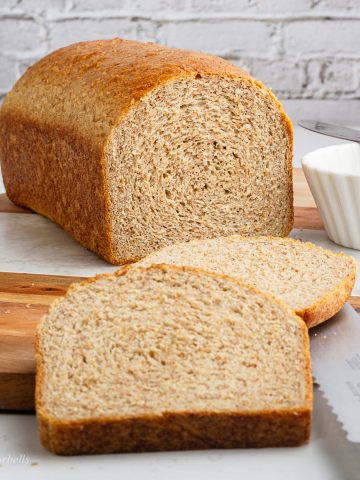
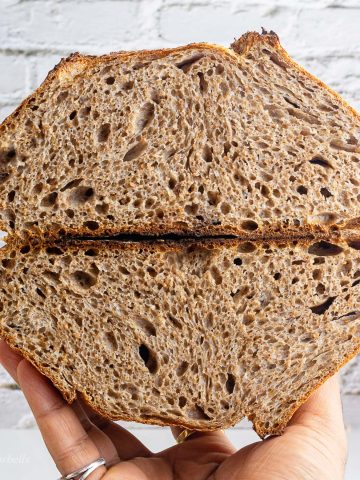


Leave a Reply